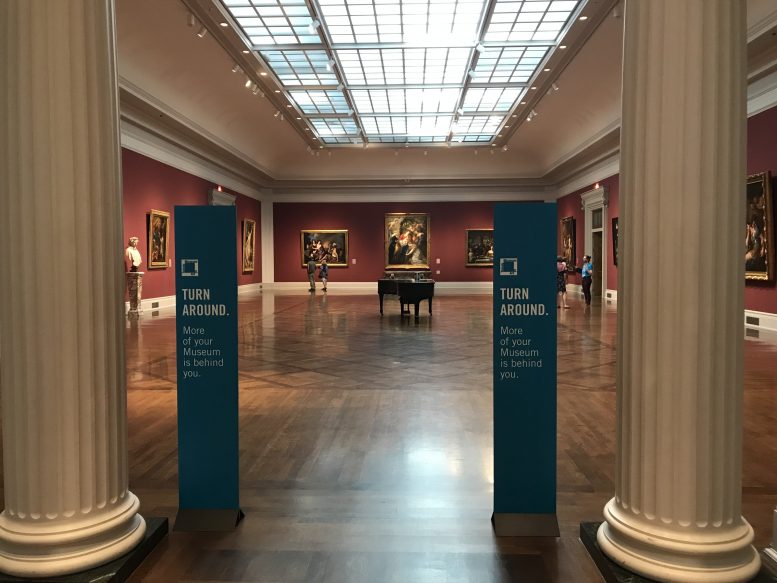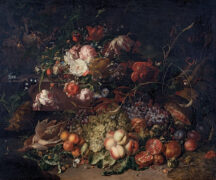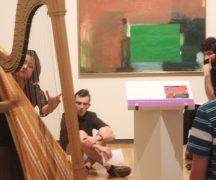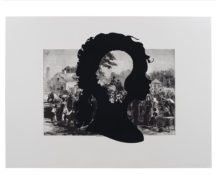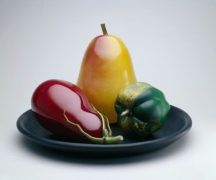By DAVID DUPONT
BG Independent News
Sharon Hanna, of Bowling Green, was at the door when the Toledo Museum of Art opened to the public for the first time on Tuesday morning after being closed because of the pandemic.
The long-time docent had already been inside the museum. Last week she and other volunteers attended a soft opening.
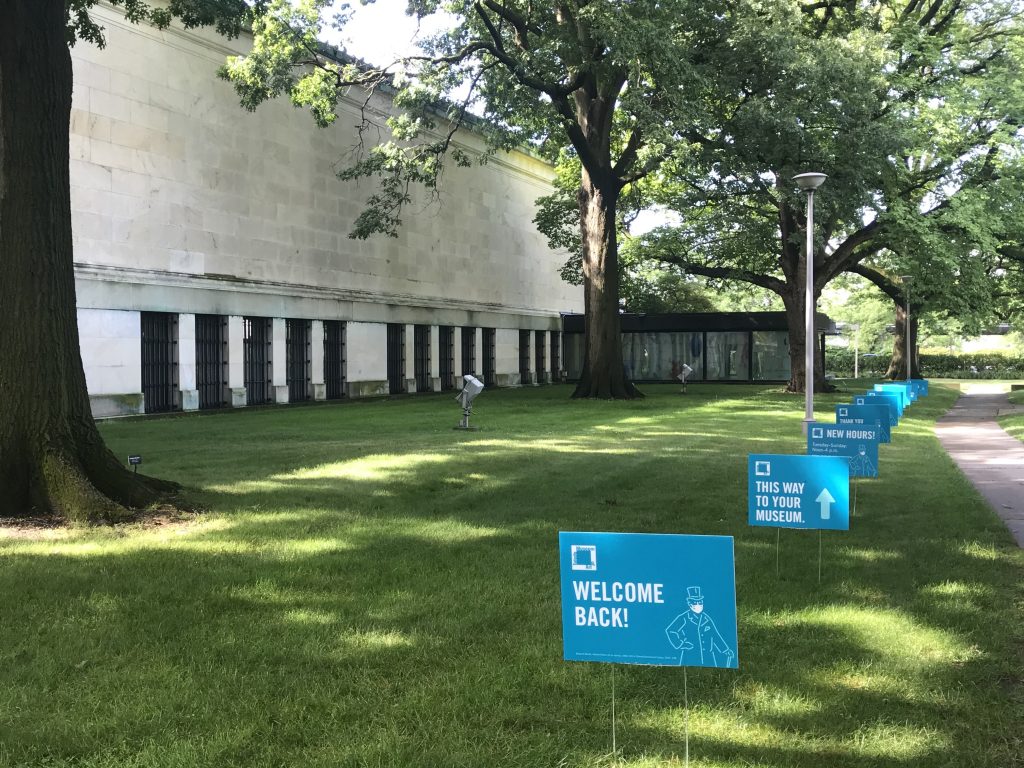
Being inside the museum again after its three-month closure, she said, brought tears to her eyes. She missed the museum so much.
And the masked museum staff, at every turn, made it clear they missed the visitors, greeting them, chatting with them, and helping them navigate the one-way route through the galleries.
The museum is now open limited hours, Tuesday through Sunday, noon to 4 p.m., with special hours for vulnerable populations from 10 a.m. to noon.
Patrons must contact the museum to obtain free timed tickets at tickets.toledomuseum.org or by calling 419-255-8000 ext. 7448.
Twenty tickets are available for each half hour time slot. Visitors can stay as long as they want.
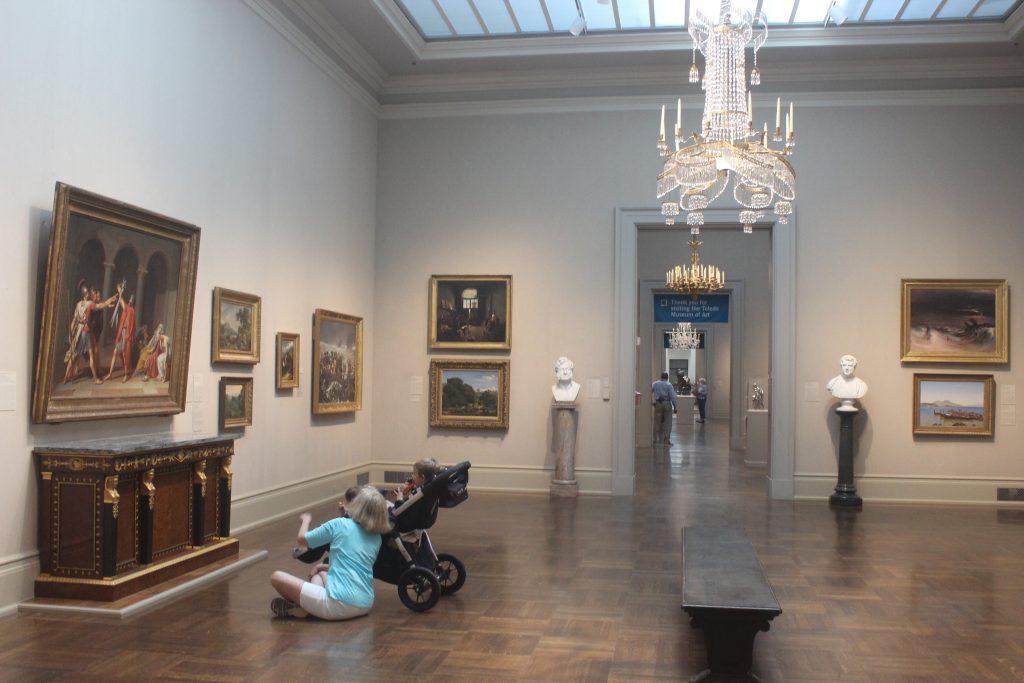
Most of the museum’s West Wing is open.
Kristina Crystal, the museum’s chief revenue officer and the leader of its reopening task force, said the staff worked “to create the best one-way flow that would take visitors through the old favorites – the Impressionists and the Cloister – but also making sure we hit the new Alison Saar exhibition” as well as Thornton Dial’s sculpture “Trip to the Mountaintop.”
That means that the visitor follows path rather than being free to roam. Instead of heading straight for a favorite spot – that corner with a clutch of Dutch winter scenes – the visitor comes upon them as if encountering an old friend on the street.
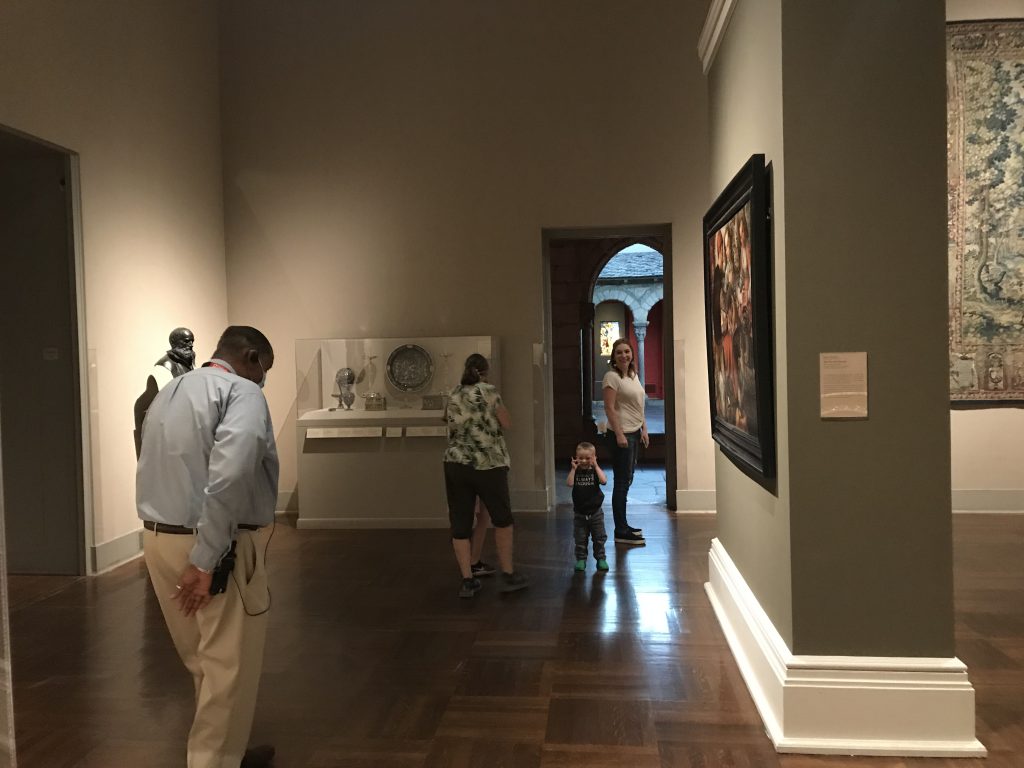
The route begins with “One Each,” an exhibit of French still life paintings in Gallery 18. The work has been on view since the beginning of the year, when news of the coronavirus was starting to emerge from China.
The visitors on Tuesday morning seemed feast on each painting, most of which depict food. No one hustled through the gallery with a cursory glance at the art on the way to another gallery.
Visitors passed through a couple galleries of saints and prophets on the way to the Cloister. These columns, from ancient monasteries, have stood through times of plague and pestilence when people knew nothing of public health and social distancing, and people died by the millions.
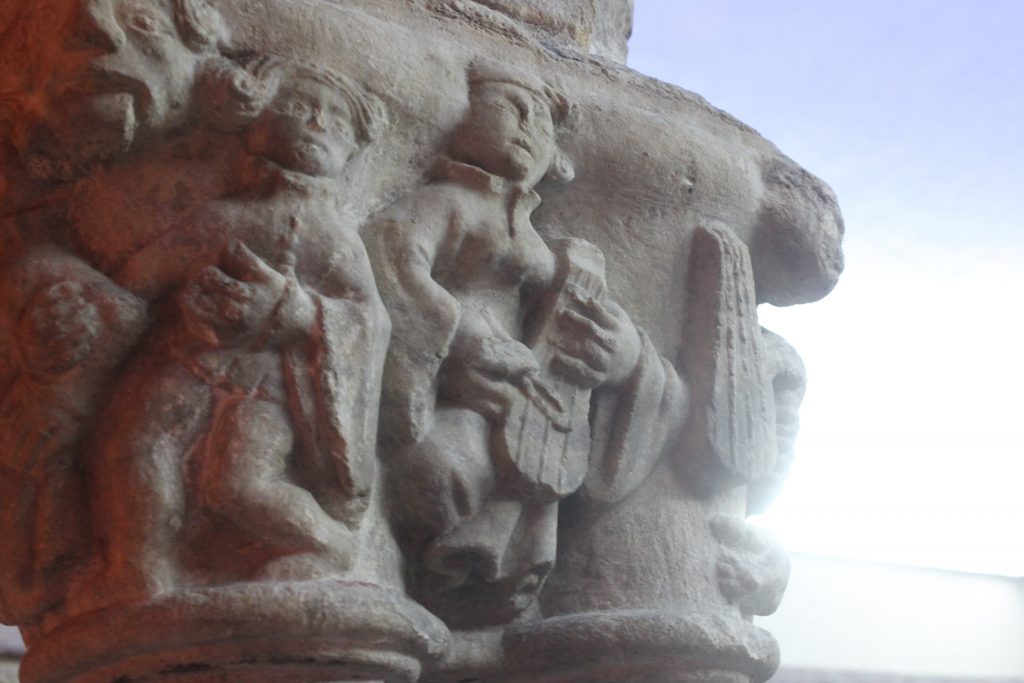
To be in the dimly space, masked up, with others strolling around seemed fitting. This felt like a place someone may go to escape the plague.
The space invites lingering with time to absorb the details not noticed in dozens of previous visits.
Several weeks ago, museum director, Adam Levine, noted that when visitors returned, their view of the art would be affected by the pandemic. But now visitors also come from a world wracked by social disturbance as demonstrators around the world demand racial justice.
The lack of racial diversity in the classic European art, aside from the occasional image of the Magi, is all the more evident.
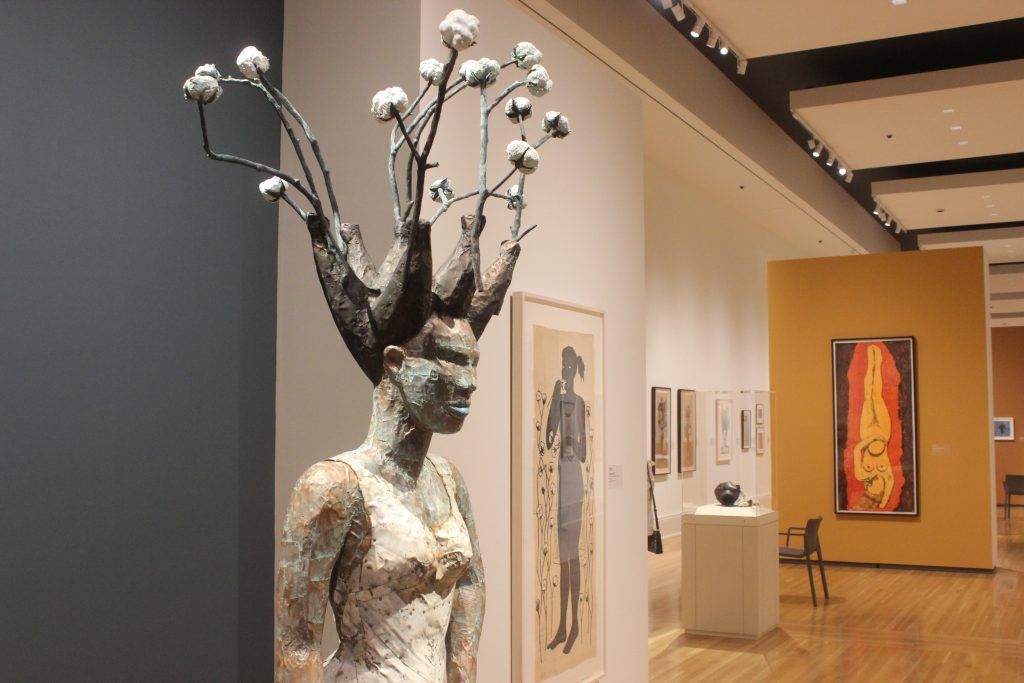
That made coming upon “Mirror, Mirror: The Prints of Alison Saar” in the New Media Gallery jolting.
A female figure with branches protruding from her head and cotton balls placed on top of each welcomes the visitor to Saar’s intense exploration of African American experience as viewed through its history and lore and her own fantastic vision.
Despite its raw, contemporary expression, that lore dates back as far as those works in the surrounding galleries.
The exhibit mixes the wood prints for which she is famous with her sculptures. The themes echo among them. Sometimes the same subject is treated in both media.
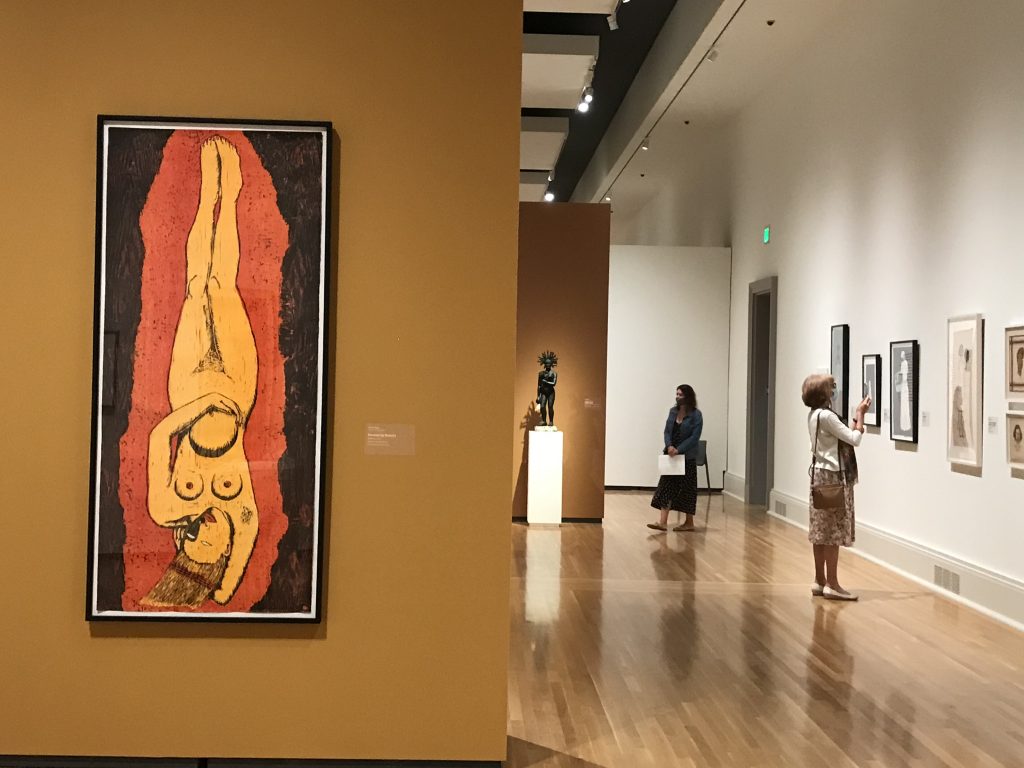
Hair is a central obsession. Sometimes it becomes antlers, or branches. Sometimes the branches are festooned with bottles evoking the belief that the bottles will trap evil spirits at night so the sun will kill them in the morning. Sometimes the branches enclosed the figure, echoes of the Brer Rabbit folk tales.
Saar’s is fiercest in her vision of Topsy, a troublesome character converted to Christianity at the end of “Uncle Tom’s Cabin” by the saintly White child Eva. On her deathbed Eva gives Topsy a lock of her golden hair.
Saar blends that American story with the Greek legend of the Golden Fleece. Topsy appears holding a mass of golden locks like a trophy in one hand and carries a machete in the other.
“Mirror, Mirror,” which had been scheduled to open in early April and end in July, has been extended to July 26.
Thornton Dial’s tribute to the journey of Martin Luther King Jr. is a fitting companion coming as the visitor exits the Levis gallery.
Like Saar, who prints on cotton sacks and work clothes and other found materials, Dial employs common, often repurposed materials. Here a black ribbon, that could be a funeral ornament or a road, travels around a construction of multicolored fabric.
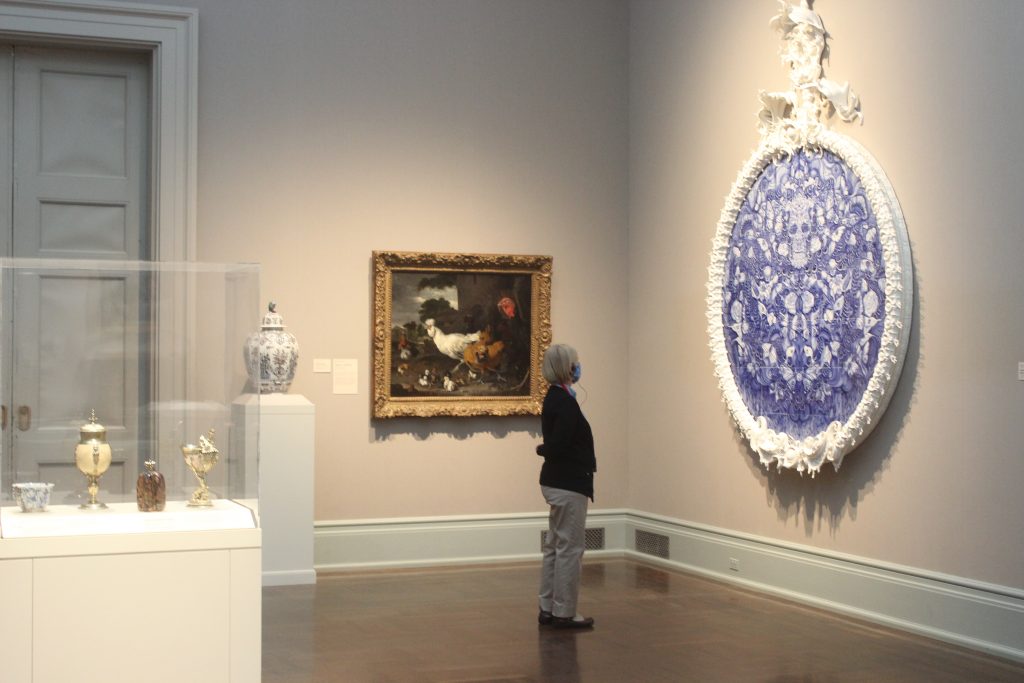
Even regular visitors may find themselves a bit disoriented exiting the gallery. Usually the traffic flows through a small gallery into the Levis Gallery that has the Global Connections show.
But that small gallery is closed letting the visitor into the collection of European art. These lead to “Expanded Views II: Native American Art in Focus” and then to “Global Connections,” a vibrant multicultural celebration of art.
The route moves through the Great Gallery, a celebration of Western European beliefs.
Not all the West Wing galleries are open, Crystal said. In a few they couldn’t find a way to avoid congestion. “We didn’t feel confident we knew how visitors would engage in those pinch points.”
So, some galleries remain closed. Opening the museum is an ongoing process, she said. They will try something out, review how it works, improve it as necessary, and “keep going.”
The museum staff will look at “how our visitors are engaging with the art and how we’re maintaining social distance.”
If all goes well other galleries can open and some programs could return.
The museum is already available for some events, including small weddings, which can be held in the Glass Pavilion.
But Crystal said they can’t forecast when the entire museum will be open. They are monitoring the situation as the virus surges in other parts of the country.
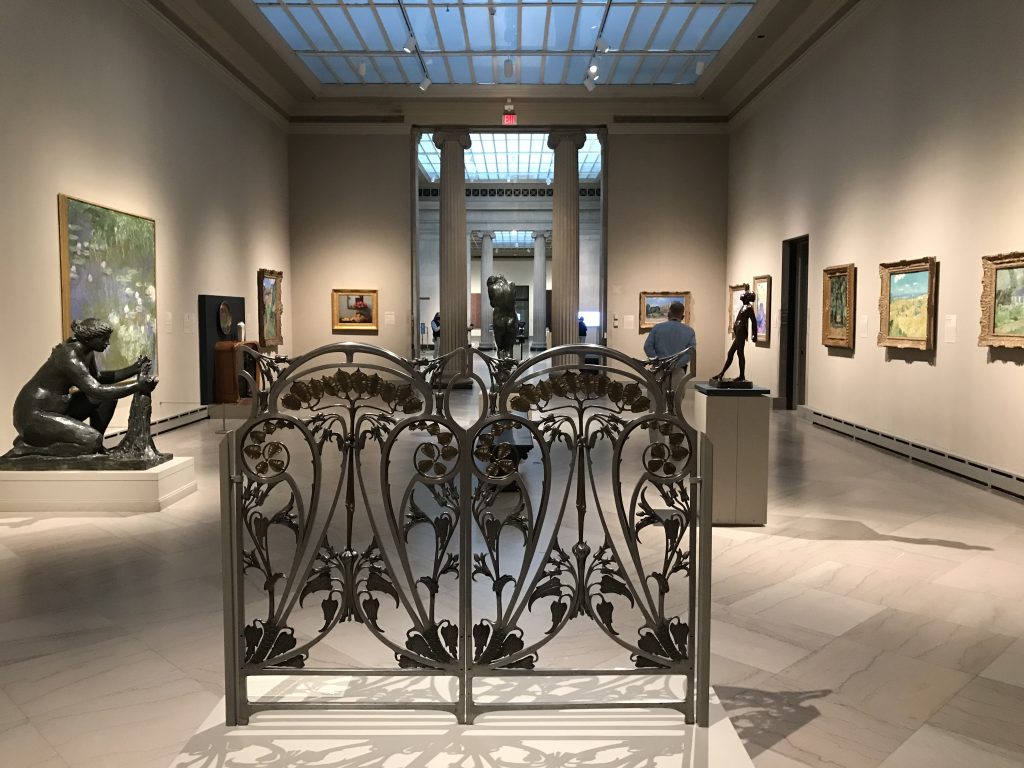
Getting to this point was a challenge. “We had so many things to do that we had never done before and do them all at one time. We were learning as we went,” she said. The facilities staff had to rearrange all the workspaces to allow for social distancing and staff and volunteers made 1,000 masks, just so staff could return to the building.
“We’ve learned a lot,” Crystal said. “We had an infectious disease expert and an industrial hygiene consultant as well as fire marshal do walk-throughs with us to give us feedback on what to improve even before we opened up for staff.”
Now they are happy to be back, working together and welcoming visitors.
“We will be cautious and safe. We want people to understand this should be an environment where they can come to get respite from everything else that’s happening in this world. So, we don’t want to be too aggressive because we want to make sure we’re doing everything the right way,” Crystal said.
“We are doing everything we can do to protect our visitors and our staff, so that they have a great experience and come back.”

